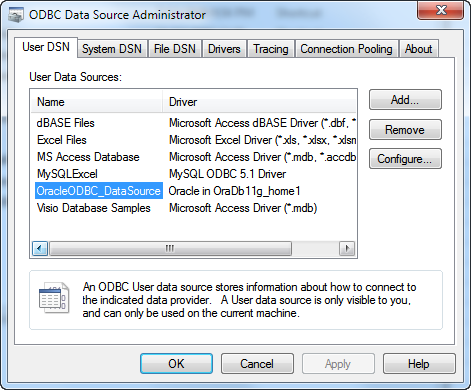Tech support scams are an industry-wide issue where scammers trick you into paying for unnecessary technical support services. You can help protect yourself from scammers by verifying that the contact is a Microsoft Agent or Microsoft Employee and that the phone number is an official Microsoft global customer service number. Sep 06, 2016 This article explains how to connect to Microsoft SQL Server using unixODBC and FreeTDS on Linux and the Microsoft ODBC driver on the Mac. It includes installation and configuration instructions for Ubuntu, CentOS and the Mac.
This article contains instructions to install the unixODBC Driver Manager for use with all the versions of Microsoft ODBC Driver for SQL Server on Linux and macOS.
Important
Delete any driver manager packages installed on your computer before you install the unixODBC Driver Manager. Installing the unixODBC Driver Manager could cause a failure of an existing Driver Manager.
Installing the Driver Manager for Microsoft ODBC Driver 13, 13.1, and 17
The driver manager dependency is resolved automatically by the package management system when you install the Microsoft ODBC Driver 13, 13.1, or 17 for SQL Server on Linux or macOS by following the instructions in the following articles:
Installing the Driver Manager for Microsoft ODBC Driver 11 for SQL Server
(SUSE and Red Hat Linux only.)
Using the Installation Script
Important
These instructions refer to msodbcsql-11.0.2270.0.tar.gz, which is the installation file for Red Hat Linux. If you are installing the Preview for SUSE Linux, the file name is msodbcsql-11.0.2260.0.tar.gz.
To install the driver manager:
Make sure that you have root permission.
Go to the directory where the MicrosoftSQL Server ODBC Driver download placed the file called
msodbcsql-11.0.2270.0.tar.gz. Make sure that you have the *.tar.gz file that matches your version of Linux. To extract the files, execute the following command: tar xvzf msodbcsql-11.0.2270.0.tar.gz.Change to the
msodbcsql-11.0.2270.0directory and there you should see a file calledbuild_dm.sh. You can runbuild_dm.shto install the unixODBC Driver Manager.To see a list of the available options, execute the following command: ./build_dm.sh --help.
When you are ready to install, and if your computer can access an external site via FTP, execute the following command: ./build_dm.sh.
If your computer cannot access an external site via FTP, get unixODBC-2.3.0.tar.gz. You can get unixODBC-2.3.0.tar.gz from http://www.unixodbc.org. Click the Download link on the left side of the page to go to the download page. Then click the appropriate link to download unixODBC-2.3.0 (not unixODBC-2.3.1). unixODBC-2.3.1 is not supported with this release of the Microsoft ODBC Driver 11 for SQL Server. Execute the following command to begin the unixODBC Driver Manager installation: ./build_dm.sh --download-url=file://unixODBC-2.3.0.tar.gz.
Type YES to proceed with unpacking the files. This part of the process can take up to five minutes to complete.
After the script stops running, follow the instructions on the screen to install the unixODBC Driver Manager.
You are now ready to install the driver. For more information, see the ODBC driver installation instructions for Linuxor macOS.
Manual Installation
If the installation script is unable to complete, configure and build the proper driver manager yourself.
Remove any older installed version of unixODBC (for example, unixODBC 2.2.11). On Red Hat Enterprise Linux 5 or 6, execute the following command: yum remove unixODBC. On SUSE Linux Enterprise, zypper remove unixODBC.
Go to http://www.unixodbc.org. Click the Download link on the left side of the page to go to the download page. Then click the appropriate link to save the file unixODBC-2.3.0.tar.gz to your computer. UnixODBC-2.3.1 is not supported with this release of the Microsoft ODBC Driver 11 for SQL Server.
On your Linux computer, execute the command: tar xvzf unixODBC-2.3.0.tar.gz.
Change to the unixODBC-2.3.0 directory.
At a command prompt, execute the command: CPPFLAGS='-DSIZEOF_LONG_INT=8'.
At a command prompt, execute the command: export CPPFLAGS.
At a command prompt, execute the command: './configure --prefix=/usr --libdir=/usr/lib64 --sysconfdir=/etc --enable-gui=no --enable-drivers=no --enable-iconv --with-iconv-char-enc=UTF8 --with-iconv-ucode-enc=UTF16LE'.
At a command prompt (logged in as root), execute the command: make.
At a command prompt (logged in as root), execute the command: make install.
You are now ready to install the driver. For more information, see the ODBC driver installation instructions for Linuxor macOS.
See Also
-->Hi all,
We are excited to announce the availability of the ODBC Driver 13.1 for macOS - Preview. The preview release adds support for macOS El Capitan with unixODBC Driver Manager and and enables access to SQL Server, Azure SQL Database and Azure SQL Data Warehouse from any C/C++ application on Linux.
Install the ODBC Driver for macOS El Capitan
[snippet slug=odbc-driver-13-1-mac-preview lang=bsh]
Try our Sample
Once you install the driver that runs on a supported Linux distro, you can use this C sample to connect to SQL Server/Azure SQL DB/Azure SQL DW. To download the sample and get started, follow these steps:

[snippet slug=odbc-c-sample lang=bsh]
Please file bugs/questions/issues on our Issues page. We welcome contributions/questions/issues of any kind. Happy programming!
Survey and Future Plans

Please take this survey to help us understand if you use unixODBC or iODBC on macOS.
Going forward we plan to improve test coverage, fix bugs reported on our Issues page and add feature support for Always Encrypted, Transparent Network IP Resolution and Bulk Copy Support. Stay tuned for upcoming releases that will have additional feature support and bug fixes.
Microsoft Odbc Driver Manager Error
Meet Bhagdev (meetb@microsoft.com)